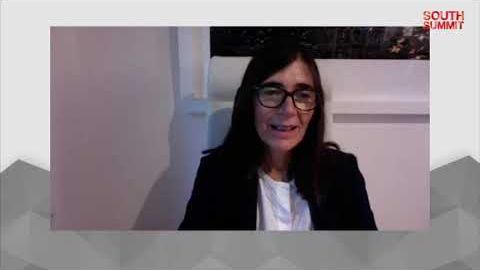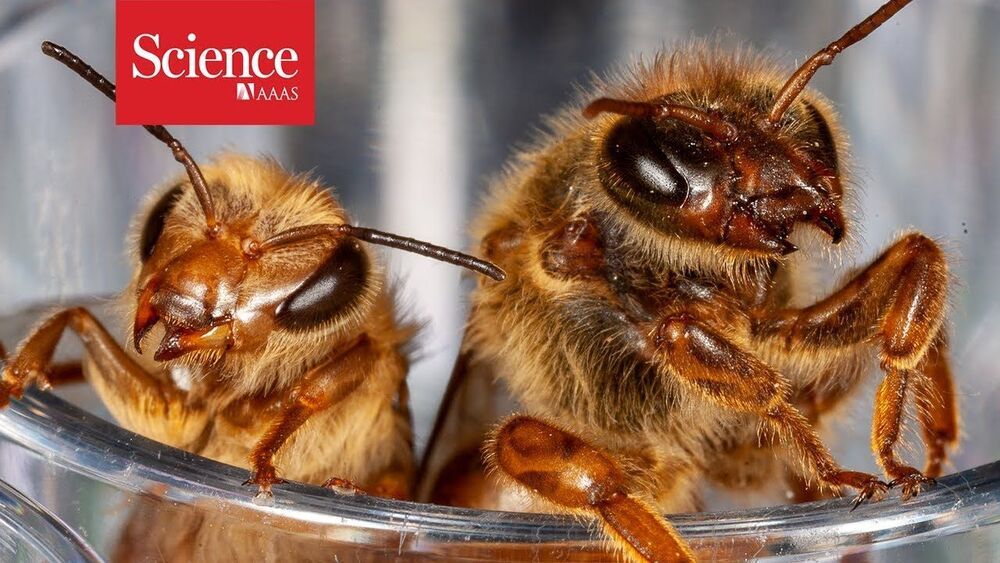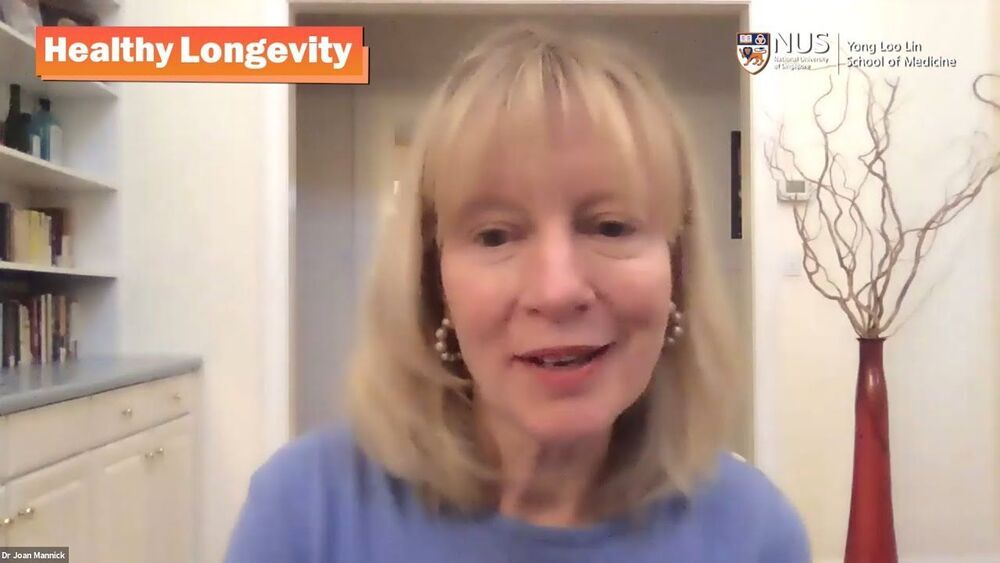Apr 4, 2021
Gut Bacteria Boost Host NAD Metabolism
Posted by Mike Lustgarten in categories: biotech/medical, life extension
Here’s my latest video (audio issues fixed!):
Papers referenced in the video:

Here’s my latest video (audio issues fixed!):
Papers referenced in the video:

Extract from a conversation that María Blasco, Director of the Spanish National Cancer Research Center (CNIO for its acronym in Spanish) had with Mario Alonso Puig during the celebration of the South Summit 2020.
In this segment María Blasco refers to aging, cancer, telomerase, and life extension. The conversation is in English and I added subtitles in Spanish.

Bees, termites, and ants can teach us a lot about cooperation, communication, and the skills that keep societies together. But these so-called social insects may also hold secrets that could reshape our understanding of human aging. Many social insects exhibit surprising aging characteristics that cause their life spans to shift depending on their roles. Following the death of a queen Indian jumping ant, for example, workers fight for the right to transform into an egg-laying ant. Much is at stake: the life expectancy of an egg-layer is five times longer than that of a worker’s. Though fruit flies, mice, and nematodes currently dominate aging research, some scientists say social insects’ aging behaviors could help dissect aging mechanisms in humans. This video will take you deep into the catacombs—er, honeycombs—of insect aging.
Read the story ($): https://scim.ag/3cFO0k0

Dr Joan Mannick, Head of Research and Development at Life Biosciences, discusses the #geroscience approach in disease treatment and the exciting work being done at Life Biosciences.
#Ageing is the greatest risk factor for almost every chronic disease. Multiple studies have shown that ageing is a modifiable risk factor that can be targeted therapeutically.
Buck Institute researchers have discovered and are developing a novel, non-invasive biomarker test that can be used to measure and track performance of senolytics: a class of drugs that selectively eliminate senescent cells. The discovery is expected to play a major role in efforts to develop treatments that would battle a myriad of chronic age-related conditions that range from arthritis to lung disease to Alzheimer’s disease and glaucoma. This biomarker is a unique signaling lipid metabolite, normally exclusively intracellular, but is released when senescent cells are forced to die. This metabolite is detectible in blood and urine, making non-invasive testing possible. With a growing list of senolytic drugs in development, detecting this metabolite via a companion test could verify performance of senolytic candidates.
“The list of age-related diseases definitively linked to cellular senescence keeps growing, as does the number of biotech companies racing to develop drugs to eliminate senescent cells,” said Buck professor Judith Campisi, Ph.D., senior scientist on the study. “While the field has never been more promising, the lack of a simple biomarker to measure and track efficacy of these treatments has been a hindrance to progress. We are excited to bring this new biomarker to the field and look forward to it being used in the clinic.”
People into aging/longevity research probably know all of what’s here already.
Aubrey de Grey has been the leading voice for antiaging, aging reversal and aging damage repair for over twenty years. He founded the SENS non-profit (Strategies for Engineered Negligible Senescence (SENS). There have been six antiaging companies that have been directly spun out of SENS is researching the hardest problems related to fixing aging damage.
Repairing damage in five of the areas of aging are now highly active areas of biotech research.
‘This means we can start to look at aging as a reversible disease,’ says Prof Shai Efrati; top geriatrician says he is skeptical, and raises concerns.
Summary: Adding selenium to diet products helps prevent obesity and increases healthy lifespan in mouse models.
Source: eLife.
Adding the nutrient selenium to diets protects against obesity and provides metabolic benefits to mice, according to a study published today in eLife.
Age-related macular degeneration (AMD), which leads to a loss of central vision, is the most frequent cause of blindness in adults 50 years of age or older, affecting an estimated 196 million people worldwide. There is no cure, though treatment can slow the onset and preserve some vision.
Recently, however, researchers at the University of Rochester have made an important breakthrough in the quest for an AMD cure. Their first three-dimensional (3D) lab model mimics the part of the human retina affected in macular degeneration.
Their model combines stem cell-derived retinal tissue and vascular networks from human patients with bioengineered synthetic materials in a three-dimensional “matrix.” Notably, using patient-derived 3D retinal tissue allowed the researchers to investigate the underlying mechanisms involved in advanced neovascular macular degeneration, the wet form of macular degeneration, which is the more debilitating and blinding form of the disease.
Summary: People with cerebral small vessel damage who also had a leaky blood-brain barrier had more tissue damage after two years than those whose blood-brain barrier was intact.
Source: AAN
As people age, changes in the tiniest blood vessels in the brain, a condition called cerebral small vessel disease, can lead to thinking and memory problems and stroke. These changes can also affect the blood-brain barrier, a layer of cells that protect the brain from toxins circulating in the blood.
